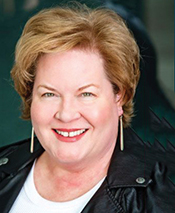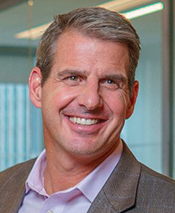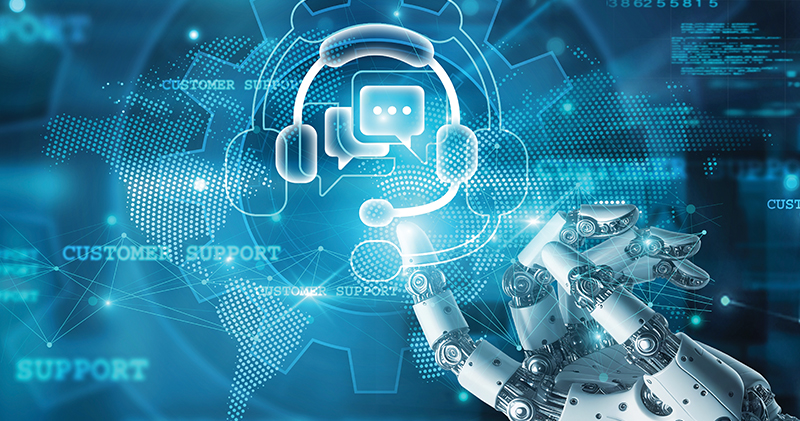Syndeo Institute at The Cable Center
FOREWORD by Diane Christman, President and CEO, The Cable Center
As we navigate a pivotal moment in broadband’s evolution, it’s essential to reflect on how far we’ve come—and how we prepare for what’s next. Across the industry, we are seeing not just innovation in technology, but a transformation in how we think about leadership, customer experience, and organizational agility.
At The Cable Center, our mission is to preserve the legacy of our industry while driving innovation forward. As part of this vision, the Syndeo Institute at The Cable Center was established as our contemporary education and innovation hub—where the next generation of leaders, intrapreneurs, and changemakers are empowered through research, leadership development, and experiential learning.
This article, drawn from a recent panel hosted by the Syndeo Institute, is a glimpse into the conversations shaping our future. It highlights how customer experience (CX) and artificial intelligence (AI) are converging—not simply to make systems faster or smarter, but to elevate the human connection that remains at the heart of everything we do.
These are not just technical shifts. They are cultural ones. And they require us to think differently about how we lead, collaborate, and innovate. The perspectives shared here reflect our industry’s deep well of expertise—and its continued willingness to evolve with empathy, insight, and intention.
I invite you to explore this piece not just as a recap, but as a call to lead. Together, we are writing the next chapter of broadband—and I couldn’t be more inspired by what lies ahead.
Beyond Bots
How CX and AI are Evolving—Together
The cable and broadband industry has undergone a profound transformation. What was once defined by long wait times and transactional service models progressed into an era of self-install kits, intuitive apps, and smart software that enables real-time provisioning and troubleshooting—often without a single call. Today, customers can prioritize services, activate equipment, and manage subscriptions with unprecedented ease.
Now, we are entering a new frontier—one where emotional intelligence, deep customer insight, and artificial intelligence (AI) work together to anticipate needs, eliminate friction, and foster experiences that feel effortless, personal, and human—creating the opportunity to build meaningful and lasting relationships with customers.
That shift—from reactive service to proactive experience—isn’t just technical. It’s cultural. And it was the subject of a powerful panel hosted by the Syndeo Institute at The Cable Center. Featuring industry leaders who’ve helped shape the trajectory of CX, the conversation spotlighted how technology is not just reshaping workflows—it’s redefining what it means to serve.
Moderated by Syndeo CEO Diane Christman, the panel included:
- Rob Stoddard, former SVP of NCTA
- Graham Tutton, founder of GTT & Associates and former VP at Comcast
- MacKenzie Roebuck-Walsh, sales executive at Databricks and Syndeo faculty lecturer
Together, they explored a central question: In a world of AI, how do we stay human—and stay ahead?
CX Reimagined
From a Cost Center to a Catalyst
Customer experience didn’t always have a seat at the strategy table. In fact, it was often seen as a line item—something to manage, not lead with.
“We constantly tripped up ourselves by tracking mud into the living room of Americans across the country and trampling the rose bushes,” recalled Stoddard, speaking candidly about the industry’s early missteps.
“The result was a massive problem in customer and consumer appreciation of our business.”
That reckoning catalyzed new thinking. In 2007, The Cable Center launched its Customer Care Committee (C5) with a bold hypothesis: what if CX wasn’t just about resolving complaints—but driving growth?
This program would evolve into the CX Collaborative (CXC), an initiative that helped shift the mindset across the industry—from problem solving to value creation.
“When you take care of employees, when you take care of customers, it has a monetary, financial impact that can be proven,” noted Tutton.
As the cultural narrative began to change, so did the operational reality. Metrics like net promoter scores (NPS) became standard. Empathy became measurable. And CX professionals moved from the sidelines to the core of business transformation.
AI Arrives
Technology as a Tool for Empathy
While culture was evolving, technology wasn’t far behind. New tools emerged that could analyze emotional tone, flag pain points, and illuminate the “why” behind customer feedback—not just the “what.”
“I can speech-analyze calls and tell you where tone changes, where performance rises and dips,” said Tutton.
But no one on the panel argued that AI would—or should—replace the human element.
“What AI’s never going to take away is the human connection,” said Roebuck-Walsh.
“If we’re smart about this, it actually heightens that connection. It gives us more time for it.”
Instead of seeing AI as a disruptor, the panel emphasized its potential as a strategic enabler—one that frees up teams to focus on coaching, growth, and the kinds of interactions that build trust.
Agentic AI
Bots That Work for the Customer
A major concept introduced during the conversation was that of agentic AI—systems that can act not just on customers, but for them.
“Imagine an AI assistant that knows your voice and your preferences,” Roebuck-Walsh offered.
“It could escalate a ticket, pay your bill, or troubleshoot an issue—without you lifting a finger. We’re heading toward a world where bots talk to bots.”
That vision may sound futuristic, but the foundation is already being built. And in a world where customers don’t want to repeat themselves—or wait to be remembered—AI can unlock continuity across channels and time.
“The industry needs to figure out how to use AI so customers never have to explain themselves twice,” she added.
“That’s not only possible—it’s expected.”
Collaboration, Competition, and the Risk of Going It Alone
Historically, the cable industry has been defined by collaboration. From standard-setting to best practices, operators and vendors alike shared playbooks—even when they weren’t directly competing. But AI could threaten that dynamic.
“I worry that as AI becomes more proprietary, we lose the ability to compare notes,” said Stoddard.
“That’s something we can’t afford to lose.”
To move forward without fragmenting, the panel agreed that ongoing transparency and experimentation are critical.
“The organizations doing this well are constantly asking, testing, and refining,” said Tutton.
“We’ve always been good at learning together. That has to continue.”
Expectations Gap
Meeting Customers Where They’re Headed
Customer expectations aren’t just changing—they’re escalating. Today’s benchmark isn’t the best in the industry. It’s the best anywhere.
“Once Steve Jobs gave us machines that seemed to know what we wanted before we did… customers started expecting that from everyone,” said Stoddard.
That means companies must design experiences that are not only rational, but emotional—anticipating customer needs, solving problems before they arise, and creating frictionless touchpoints that feel personal.
“Rational is your table stake. Emotional is your differentiator,” said Tutton.
Where We’re Headed
Evolution, Not Elimination
Looking ahead, the panelists agreed: AI is only going to become more embedded in operations, customer journeys, and decision-making. But it won’t replace the human element—it will elevate it.
“In the next two to five years, we’ll see AI evolve into something like a digital executive assistant,” said Roebuck-Walsh.
“It will support people—not supplant them.”
“You have to earn trust beyond the shock and awe of something new and sexy,” added Tutton.
“This will let us focus on more engaging, value-add work.”
And at the core of that shift is clarity: knowing what AI does best, what it does well with human guidance, and what must remain distinctly human.
“This is an evolution,” Tutton concluded.
“We’re coming to a place of comfort—with what AI can do by itself, what it can do with some help, and what’s kryptonite. The stuff only people can handle.”
Conclusion
More Human, Not Less
The future of CX isn’t less human—it’s more. Enabled by AI, informed by data, and led by teams who understand that connection is the ultimate currency, the broadband industry is poised to define what customer-centricity looks like in the digital age.
As this panel made clear, we don’t have to choose between efficiency and empathy. We can—and must—do both. The path forward is collaborative, innovative, and profoundly human.
Serving What Matters Most
At the heart of every technological shift lies a deeper question: How do we serve? Not just customers, not just teams—but humanity. The needs of the people we connect are evolving just as rapidly as the tools we use to support them. From digital equity to emotional well-being, broadband sits at the center of how modern life functions—and flourishes.
As AI matures, it will give us unprecedented insight into those needs—surfacing patterns, predicting gaps, and enabling action. But with the leadership of The Syndeo Institute and all of the companies comprising the broadband universe, it will be up to us to listen, to lead, and to build with purpose.
This isn’t just the future of CX. It’s the future of service itself.
Steven Nesbitt
Director of Sales, North America,
Wirewerks
Steven is a business professional with a decade of experience in the telecommunications industry. Each of those years has been in a variety of professional capacities ranging from managing small regional territories and now directing the company’s sales operations for North America. He has worked with leading telecommunications companies and has extensive knowledge of the latest trends and technologies in the market. Steven’s expertise includes network architecture, infrastructure design, and project management. He is passionate about developing long-term business relationships to connect people and transform businesses.

Diane Christman
President and CEO,
The Cable Center

Rob Stoddard,
former SVP of NCTA

Graham Tutton,
founder of GTT & Associates and former VP at Comcast

MacKenzie Roebuck-Walsh,
sales executive at Databricks and Syndeo faculty lecturer
Image, Shutterstock



